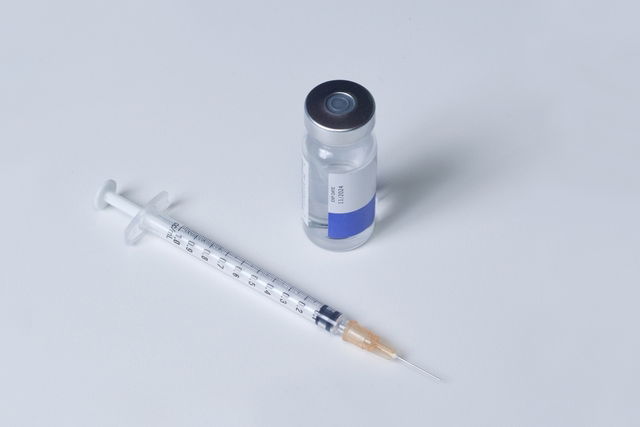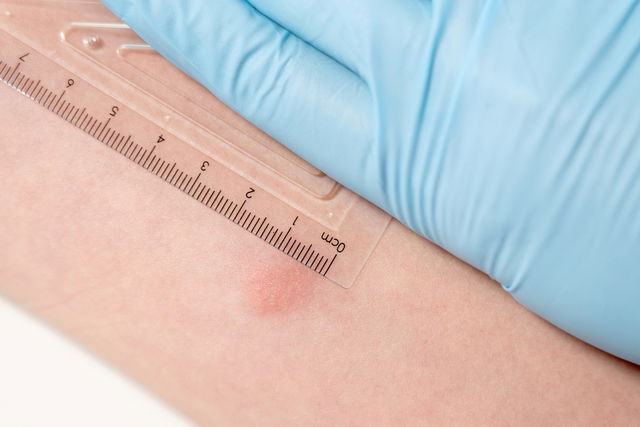A TB test is is a standard method to identify the presence of a Mycobacterium tuberculosis infection. It is often used to facilitate the diagnosis of tuberculosis. Usually, the exam is done on people who have been in direct contact with others infected by this bacteria. This test, also known as a PPD (purified protein derivative) test, can be done even if the patient is not actively symptomatic.
The TB test is also referred to as a Mantoux skin text and can be done in clinic and lab settings. It is done by injecting a small amount of protein that comes from the tuberculosis bacteria beneath the skin. The results are then interpreted by a doctor or nurse to determine a diagnosis.
A positive TB test means that there is a high possibility of infection with this bacteria, however this test alone is not sufficient for diagnosing tuberculosis. The doctor should order further testing, like a chest x-ray or sputum culture, to confirm or rule out tuberculosis.

How a TB skin test is done
TB tests are done in a lab or clinic setting by injecting a PPD (purified protein derivative) beneath the superficial layer of the skin. The injection contains proteins that are present on the surface of the tuberculosis bacteria. These proteins will not cause infection in those that are not actively infected, however it will cause a skin reaction in those who are infected, have been infected in the past, or have been vaccinated.
The substance is injected into the forearm and results (whether there is a positive reaction or negative reaction) are interpreted 72 hours after application. The patient is usually advised to return to the office for a reading and an assessment of any symptoms after this time.
To complete a PPD test, no prep or fasting is required. You should inform your doctor, however, of the medications you are currently on.
A TB test can be done in children, pregnant women and patients with a compromised immune system. It should be avoided in those in which a severe allergic reaction is suspected, like patients with necrosis, ulcers and sever anaphylactic shock.
Interpreting results
The results of a PPD test are determined by the skin reaction that may or may not appear following injection. This reaction, also referred to as the induration, is measured in millimeters.
Positive TB test
In general, a positive result will produce a small, red bump or rash in the area of injection that measures over 5 mm in length. The appearance of this small bump means that the patient:
- is currently infected with tuberculosis
- has contracted tuberculosis in the past
- has been in recent contact with some who has tuberculosis, or
- received BCG vaccination in the past
A positive test is not sufficient for diagnosing an active tuberculosis infection, however. The doctor will likely order further testing to confirm infection, like a chest x-ray to visualize any disease changes in the lungs, or a sputum culture to look for tuberculosis bacteria in phlegm.

Negative TB test
A PPD test is considered to be negative if no bump or rash appears at the injection site, or if the bump or rash is less than 5 mm in length. It means that the patient has a very low probability of having tuberculosis, currently or in the past. If the doctor continues to suspect tuberculosis, further testing can be ordered.
A false-negative reaction can occur in people who do contain the tuberculosis bacteria, but do not present with a bump after injection. This may occur in patients over 65 or with a history of AIDS, cancer, immunosuppressant therapy, malnutrition, or a severe infection.
Because of this chance for a false-negative, doctors should not rely on solely the injection to confirm a diagnosis of tuberculosis. This disease can be assessed through a chest x-ray, antibody testing or a sputum culture.
